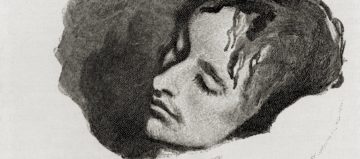Michael Barrett in New Stateman:
 We knew that the persistent cough spelled his end. The fever had preceded it, just as it had in his mother, brother and dozens around him. The contagion that was devastating society had him in its throes. When he finally died, a postmortem showed his lungs had been decimated. He’d suffocated, drowning in his own inflammatory fluids. The young English poet John Keats died aged just 25 in Rome on 23 February 1821, having been diagnosed with tuberculosis, or consumption as it was then known, just over a year before. In 1819, inspired by his medical training and acute observation of his disease, Keats captured the essence of its impact on society.
We knew that the persistent cough spelled his end. The fever had preceded it, just as it had in his mother, brother and dozens around him. The contagion that was devastating society had him in its throes. When he finally died, a postmortem showed his lungs had been decimated. He’d suffocated, drowning in his own inflammatory fluids. The young English poet John Keats died aged just 25 in Rome on 23 February 1821, having been diagnosed with tuberculosis, or consumption as it was then known, just over a year before. In 1819, inspired by his medical training and acute observation of his disease, Keats captured the essence of its impact on society.
“Ode to a Nightingale” (1819), written as his symptoms took hold, speaks of “the weariness, the fever and the fret” associated with his condition where “youth grows pale, and spectre-thin, and dies; where but to think is to be full of sorrow and leaden-eyed despairs”, and where the “the dull brain perplexes and retards”. He envies the nightingale, free from disease and able to fly through the woodland skies, while Keats wishes to alleviate his suffering through death: “for many a time I have been half in love with easeful Death, Call’d him soft names in many a mused rhyme, To take into the air my quiet breath; Now more than ever seems it rich to die, To cease upon the midnight with no pain, While thou art pouring forth thy soul abroad In such an ecstasy!”
More here.
